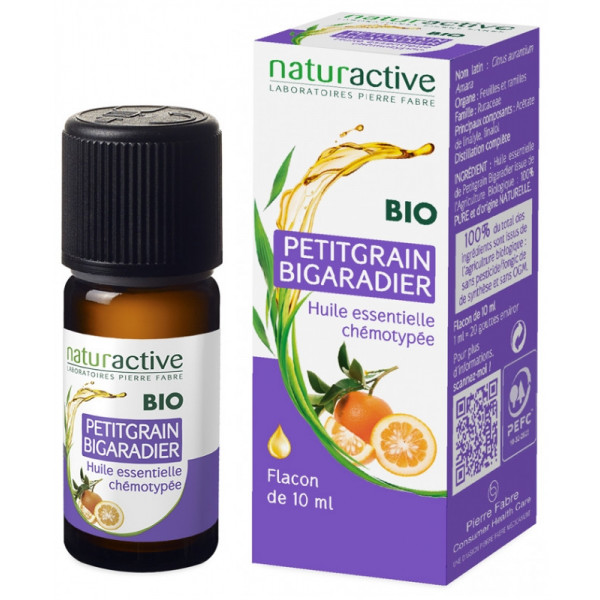Indications
Treats mood disorders - nervousness, anxiety, seasonal depression and sleep disorders (calming & tranquillising EO). Used to treat benign skin disorders, helps the healing process (anti-septic EO) and helps menstrual problems (antispasmodic).
Botany information
Citrus x aurantium L. ssp amara Botanical family: Rutaceae Producing organ: leaf and branch Chemotype: linalyl acetate, linalool. Origin: Paraguay
Botany specifications
The bitter orange tree is part of the citrus fruits introduced into Europe by the Crusades. Their white flowers give off a smooth and calming fragrance. Its bitter orange fruit, darker and smaller than the sweet orange is not to be consumed fresh. The term “small seed” eludes to the size of the fruit at the moment of harvest and distillation.
Use
Diffusion +++, Bath +++, Massage +++, Orally ++
Ambient setting: on its own or in a mixture by regular low heat evaporation.
Atmospheric diffusion: in a mixture from a diffuser by spraying.
Dermal application: diluting, 5-30% in vegetable oil.
Orally: diluted with some vegetable oil - only after medical agreement. 1-2 drops 3 times per day.
Dry inhalation: 1-2 drops on a tissue.
Facial sauna: 1-2 drops in bowl of boiling water.
Practical advice
Important to know : The bitter orange essential oil gives off a remarkably calming effect.
Stress, Nervousness, Anxiety : Relaxing formula: 45 drops of bitter orange EO + 45 drops of ylang ylang EO in a 30ml bottle, diluted in Argan oil; apply onto the chest 2-3 times per day.
Period pains : The antispasmodic effect helps relieve menstrual pain.
Hair treatment : - 5 drops of bitter orange EO in a neutral shampoo: a formula to treat greasy hair with or without dandruff. - For daily treatment of greasy/spotty skin, add tea-tree oil and dilute 5% into Jojoba vegetable oil.
Contraindication
Not recommended for pregnant or breast feeding women or children under 8 years of age.


 100% secure payment, Customer Satisfaction
100% secure payment, Customer Satisfaction
 Order shipped within 24 hours from Monday to Friday*
Order shipped within 24 hours from Monday to Friday*



